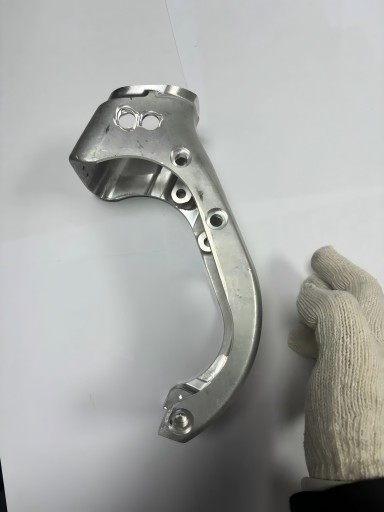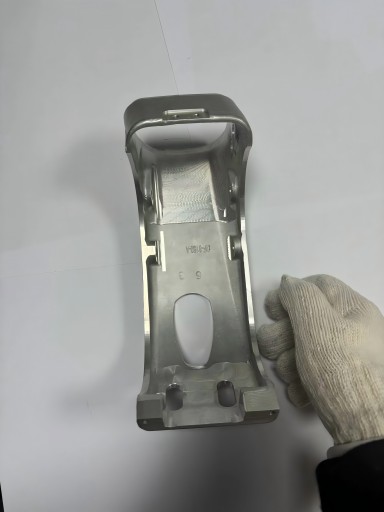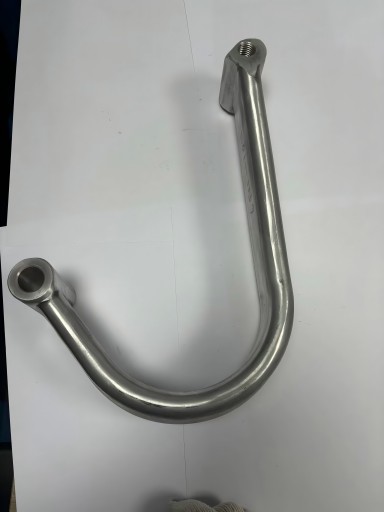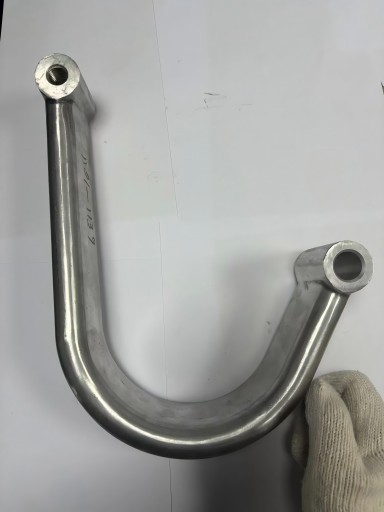We used the forging process to make a small batch of custom machined parts. The precision and surface of the parts have reached very good requirements. What is the process of forging?
The forging process is a processing method that uses forging machinery to exert pressure on metal billets to produce plastic deformation to obtain forgings with certain mechanical properties, shapes and sizes. The following is its detailed introduction:
Preforging preparation
• Raw material selection: According to the use requirements and performance characteristics of forgings, select the appropriate metal materials, such as carbon steel, alloy steel, stainless steel, etc., and test the quality of raw materials to ensure that they meet the relevant standards and requirements.
• Blank calculation and blanking: according to the shape, size and forging ratio of the forgings and other factors, calculate the weight and size specifications of the required blank, and then use cutting methods to process the raw material into a suitable blank.
Forging heating
• Heating purpose: to improve the plasticity of the metal, reduce deformation resistance, in order to facilitate the forging of the blank, while improving the structure and properties of the metal.
• Heating equipment: common flame furnace, electric furnace, etc. When heating, it is necessary to control the parameters such as heating speed, heating temperature and holding time to prevent defects such as overheating and overburning of the billet.
Forging process
• Free forging: The use of impact force or pressure to create a plastic deformation of the blank between the anvil iron, thereby obtaining the desired shape and size of the forging. The basic process of free forging includes upsetting, drawing, punching, bending and so on.
• Model forging: the blank is placed in the pre-made die bore, under the action of die forging equipment, the blank is pressed to produce plastic deformation and fill the die bore, so as to obtain the forging consistent with the shape of the die bore. The production efficiency of die forging is high, the dimensional accuracy of forging is high, but the die cost is high, and it is suitable for mass production.
Post-forging treatment
• Cooling: According to the material, shape and size of the forging and other factors, choose the appropriate cooling method, such as air cooling, pit cooling, furnace cooling, etc., in order to control the cooling rate of the forging and obtain good organization and performance.
• Heat treatment: quenching, tempering, normalizing and other heat treatment processes for forgings to improve the structure and mechanical properties of forgings, improve its strength, toughness, hardness and other indicators.
• Surface cleaning: using sandblasting, shot blasting and other methods to remove oxide, burr and other defects on the surface of the forging, improve the surface quality of the forging.
• Inspection: Inspection of forgings such as appearance inspection, dimensional accuracy measurement, mechanical property testing, etc., to ensure that the quality of forgings meets relevant standards and requirements.
After we understand the process of forging processing, the forging processing is compared with other processing processes. What are the advantages?
Compared with other processing methods, forging processing has many advantages, which are reflected in the following aspects:
Superior mechanical properties
• Through the forging process, the metal blank is plastic deformed under the action of pressure, the internal grain is refined, and a continuous fiber structure is formed, so that the strength, toughness, fatigue strength and other mechanical properties of the forging are significantly improved, and can withstand greater loads and more complex stress conditions.
High material utilization rate
• Forging processing is the plastic deformation of metal billet in solid state. Compared with cutting and other methods, the flow line distribution of materials is more reasonable, which can effectively reduce the processing allowance, improve the material utilization rate, and reduce the production cost. Especially for precious materials, the economic benefits are more significant.
High accuracy of shape and dimension
• Die forging process can make the blank plastic deformation in the die bore through the precise design and manufacture of the mold, so as to obtain the complex shape and high dimensional accuracy of the forgings, reduce subsequent processing procedures, improve production efficiency and product quality consistency.
High production efficiency
• In the case of mass production, the production efficiency advantage of forging processing is obvious. Such as the use of automatic forging equipment and production lines, can achieve rapid heating, forging and cooling of billets, greatly improve production efficiency, to meet the needs of large-scale production.
Wide range of application
• Forging can be used for a variety of metal materials, including carbon steel, alloy steel, stainless steel, non-ferrous metals, etc., and can manufacture parts of various shapes and sizes, from small precision parts to large mechanical components can be processed by forging process.
Post time: Nov-14-2024




